Driving through Outback Australia is one of the most quintessential road trips you can make.
Like Route 66, one of the best US road trips, journeying through rural and remote Australia will have you experiencing and exploring some incredible destinations you’d never get to see without your own set of wheels.
But do be prepared, life out here can be a bit … well … different!
Far removed from the city slickers in Sydney or Melbourne, life in the Outback trots (or slowly ambles) along to a different rhythm and a different set of rules!
As such, it’s important to be forewarned about the sort of thing you might expect when taking a road trip through Outback Australia.
It’s also good to know about the sort of driving conditions and cautions you might encounter too.
Luckily, when I started driving out of town, through the bush and into Outback Australia, I had a good old Aussie sat next to me to show me the ropes.
But for those of you less fortunate (*cough cough*) here’s 10 essential road safety tips you need to read before driving in Outback Australia.
Related Posts
- 9 Crucial Things to Consider When Planning an Aussie Road Trip
- The 15 Essential Gadgets You Can’t Road Trip Australia Without
- Complete Central Australia Road Trip Itinerary
This page contains affiliate links meaning Big World Small Pockets may receive a small commission on any purchases at no extra cost to you.
#1 Watch Out for Wildlife
This is one of those key road safety tips that is more applicable than ever in Outback Australia.
That’s because the number of large wild and farmed animals here increases exponentially.
And, of course, you’ve got to love it when said large wild and farmed animals wander out and across the road right in front of you.
Probably the worst experience we had of this was during our drive to Carnarvon Gorge National Park in Queensland.
We probably had to dodge a cow every 10-15 minutes on this road trip, which not only made the journey very slow going, but also hair-raisingly dangerous at the same time!
With the boy desperately trying to keep up the pace and steer, while I stayed glued to the windscreen yelling “COW” from the passenger seat every time I could spot one of the bovine b*stards, it wasn’t the most relaxing of drives.
Learn from this people!
Getting passengers to help you see wildlife on the road can be a great help (sort of!) and having a handy animal-spotter for a passenger is also a good reason to limit your solo driving time in the Outback.
Just enter your details below and I'll email it you - simple!
Information will be sent to the email provided above
#2 Limit Driving Time in the Dark
Anyway, the reason for the whole cow debacle on the way to Carnarvon Gorge National Park, was because we were driving at night.
(Ok, yes stupid)
For, as we all know, dark colours absorb light, so the darling black and brown cows in the darkness could barely be spotted until we were literally upon them!
Therefore, another one of the essential Outback road safety tips I’m relaying is that you need to be particularly vigilant at night.
In fact, when it comes to animals on the roads, you need to be particularly vigilant during all the hours of reduced light i.e. sunrise, sunset and at nighttime.
These are the times when animals are not only harder to spot, but to add insult to injury, many of them also decide to come and feed at the side of the road during this time.
Unless you enjoy slaughtering innocent wallabies (or think crashing your car thanks to a feral pig is fun), can I perhaps suggest that you actually try not to drive at night in Outback Australia at all.
If you do, make sure you put your headlights and spotlights/LED bar on and stay ALERT!
(FYI: Headlights should also be used in case of poor visibility due to fog, heavy rain or bushfires.)
5 ESSENTIAL PACKING ITEMS FOR AUSTRALIA
#1 Good Camera – You will be pretty much snapping non-stop in Australia and will need a good camera to do this gorgeous country justice. I highly recommend the Sony A6000, which I use for all my travels and love, not least because it’s light, compact and robust!
#2 Good Walking Shoes – There will be a lot of walking in Australia – from cities to national park! Make sure your feet are comfortable therefore with a pair of New Balance Trainers. Perfect for stylish strollling, I love mine.
#3 Good Guidebook – I’m still a massive fan of the Lonely Planet Guidebooks and do think their Australia edition is well put together.
#4 Good Water Bottle – Travelling in hot old Australia can be thirsty work, so make sure you have a metal water bottle that you can refill as you go, because tap water is drinkable… and free!
#5 Good Sun Hat – And there’s no denying you’ll need a good sun hat for protection in Australia too. In my opinion you can’t go past this Hello Sunshine one, which is both gorgeous and ideal for keeping the rays off your face.
#3 Choose Photo Stops Wisely
This is a classic for us tourists, especially because, knowing how beautiful the Australian Outback landscape is, the temptation to snap photos as you’re pootling along en voiture is all too great!
However, this really isn’t a good idea safety-wise, as stopping abruptly – or in unsafe locations – and pulling out your camera, can easily cause an accident.
If you want to snap a pic of the stunning scenery around you, then make sure you can pull over at a safe pace to a reasonable location and not endanger other drivers or passengers in the process.
Not swerving or driving like a lunatic for your Go-Pro footage is also one of those very handy Outback road safety tips for tourists!
#4 Research Road Conditions
As we all know, Australia is a country of extreme weather. And nowhere is this more a fact of life than in the great Outback.
As a result of unstable weather patterns, road conditions out here can quickly and easily change. Flooding or bushfires are a common occurrence and can significantly impact your intended journey (to put it mildly!)
As such, checking the lay of the land in advance of your journey is definitely one of the most important road safety tips for driving in remote areas.
Road condition reports can generally be found in Visitor Centre’s along your route, but probably the easiest way to find out is to check road reports online.
These handy info sites generally include any road closures, warning of any potential hazards, necessary vehicle requirements and basic condition notes, so that you have more of an idea of what to expect.
Each state will have their own website, so make sure you get the details in advance.
Although updates happen regularly, sometimes, in very remote areas, you can beat the condition report to an update – which is not always a good thing!
For us this happened when we tried to make our way over Cahills Crossing from Kakadu National Park to Arnhem Land in the Northern Territory.
This was the second time we’d attempted to make the journey after blowing a hole in the radiator the first time (read about it in week 10 of our budget 4wd trip around Australia), yet we arrived at low tide (after checking the road report) to find the river that runs over the crossing already at a dangerously high level of 1.2m.
Shortly after we’d got out of the Landrover to stare at the river/road in dismay, the local rangers turned up and declared the road (unsurprisingly) closed for the season. And informed us they would be amending the road condition report with the relevant personnel soon.
Yes, when driving in Outback Australia my friends, it always pays to be flexible and to have a Plan B.
#5 Know the Road Train Rules
Know what a road train is?
No?
Then it’s just as well you’re reading this guide about the most essential road safety tips when driving Outback Australia isn’t it?!
FYI: A road train is not an ordinary train that miraculously runs on invisible tracks along the road. No, it’s basically a massive freaking truck. Like seriously massive!
That also makes these big boys seriously dangerous (potentially) so you’re well placed to know a few things about how to deal with them if you’re going to the Outback.
The first thing you need to know is that you must be VERY careful when overtaking a road train. You’ll need a huge amount of clear distance in front of you to make this safe and you will need to watch the back end of the road train, which is liable to swing back and forth across the central white line like a pendulum at any given moment. Try to wait until an overtaking bay or lane if you can.
Secondly, keep your distance from road trains in general, both when they are in front of you and when they are passing you.
Thirdly, it’s essential to know that road trains have the right of way on many single lane highways in Outback Australia. This means YOU HAVE to get off the road and safely onto the hard shoulder to let them continue their trajectory. You do not share the road with road trains, you cannot share the road with road trains. Seriously, these guys are ginormous and they will plough you down. Get off the road safely if you see one hurtling towards you on a single lane highway and stay there until it’s safe!
#6 Plan Your Journey
That’s right, if you’re going to drive through Outback Australia, then one of the best road safety tips I can give you, is to get the maps out in advance and study them.
Just do it ok. More explanations why to follow …
#7 Prepare for Off Roading
As a place already full of rugged and rough terrain, Outback Australia generally up its game, by not even sealing most of its roads. By that I mean they don’t have bitumen / tarmac / black-top covering them.
This is something that may well differ from your home country, especially if you’re from London.
If you’re taking an Outback road trip therefore, can I definitely recommend you plan your route in advance (told you I’d explain more), making sure you know whether dirt roads will make up any part of your intended journey.
If do you intend to drive on unsealed roads, then you have to make sure you have a suitable vehicle (4×4?) with suitable equipment (sand tracks, a winch, a satellite phone?) Checking the road condition, as in #4, will also come in handy in preparing here!
You will also need a suitable skill set to tackle dirt roads! A good knowledge of how to operate a 4wd vehicle, as well as some off-road experience, is a much-needed starting point.
With rough roads and changeable conditions, one of the most essential road safety tips when driving in the Outback is to stick within your comfort levels.
This means taking the sensible course of action and not driving down an unsealed road if you feel it may be too difficult. Just do the boring, but ultimately better thing and choose an alternative route.
#8 Leave the Gate as you Found It
Believe it or not, much of the vast and seemingly desolate Outback is actually covered by huge, like really huge, cattle stations. I, for example, have driven past some the size of Belgium…. BELGIUM!
If you plan on getting off the bitumen therefore, it’s a likely fact that at one time or another you’re going to be driving through cattle station property.
As such, there’s some key road etiquette you need to be aware of when driving Outback Australia, particularly when you are on private property.
The most obvious one of these is to leave any gates (which normally signify the boundary of some huge cattle station) as you found them i.e. leave them open if you find them open, close them after you if you find them closed.
Sticking to this basic level of courtesy makes life easier for everyone and allows people after you, the same opportunity to enjoy the level of remote experience you have.
#9 Watch the Long Drives
Because it’s so big and because it’s so remote, long hours of driving are a fact of life in the Outback (and don’t we know it!)
Sometimes it can take many hours just to get between towns and in the hot, humid weather, driver fatigue is a common problem.
As such, one of those key road safety tips when driving in Outback Australia is to take breaks often – ideally 15 minutes every 2 hours.
This is again where planning your route in advance (#5) becomes very important, because it will allow you to see where rest points are available along the way.
When you reach one, it’s always a good idea to get out of the car and stretch your legs as often as you can. Also, make sure you drink plenty of water and don’t be afraid to stop for a snooze if this is what you’re feeling like you need.
#10 Always Pack Extra Supplies
Breakdowns can be an issue anywhere in the world you’re driving a vehicle, but in Outback Australia, the enormity and harsh climate, means it can be a very long time until you receive help and very dangerous until you do too.
As such, packing extra supplies is one of the most basic road safety tips out here.
Things to consider include extra food, fuel and water. It’s also a good idea to have a torch, some basic tools and a puncture repair kit with you too.
If you do get into trouble, always stay with your vehicle and try to reach help via your mobile, radio or satellite phone. Trying to walk to help is not recommended, as it is easy for people to become dehydrated and disorientated.
PIN IT FOR LATER!
And on that cheery note, I’m going to wrap things up folks!
Hopefully you’ll find my 10 essential road safety tips when driving Outback Australia useful and they’ll lead to you safely enjoying your time across the open roads of this great Land Down Under in no time!

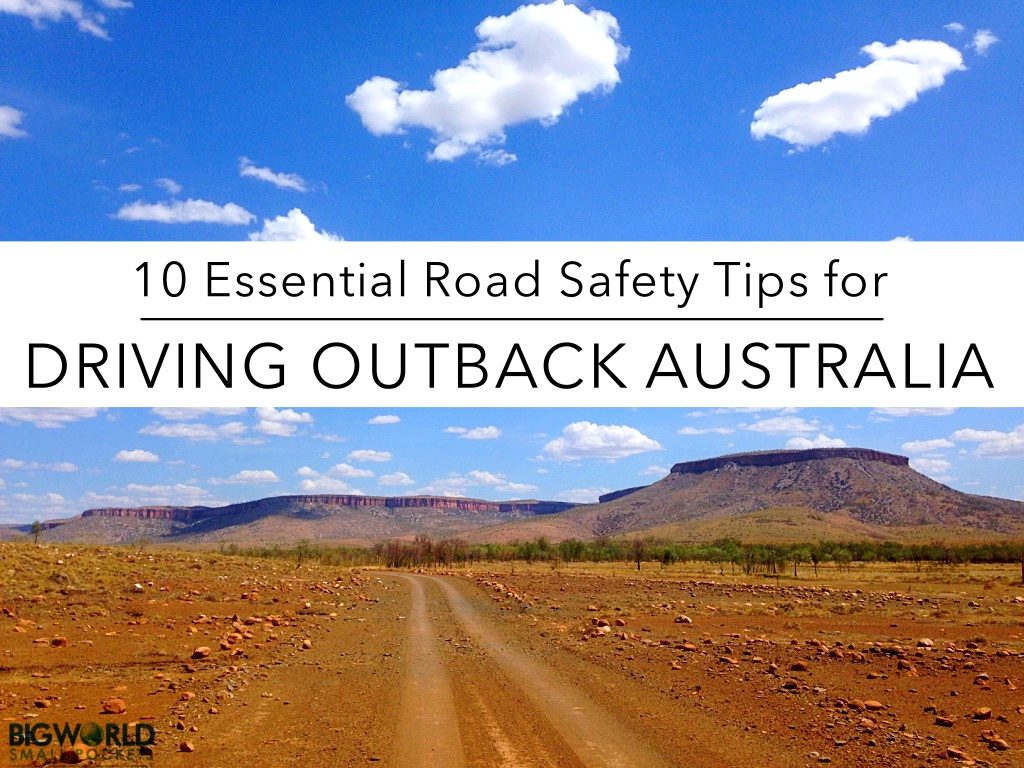
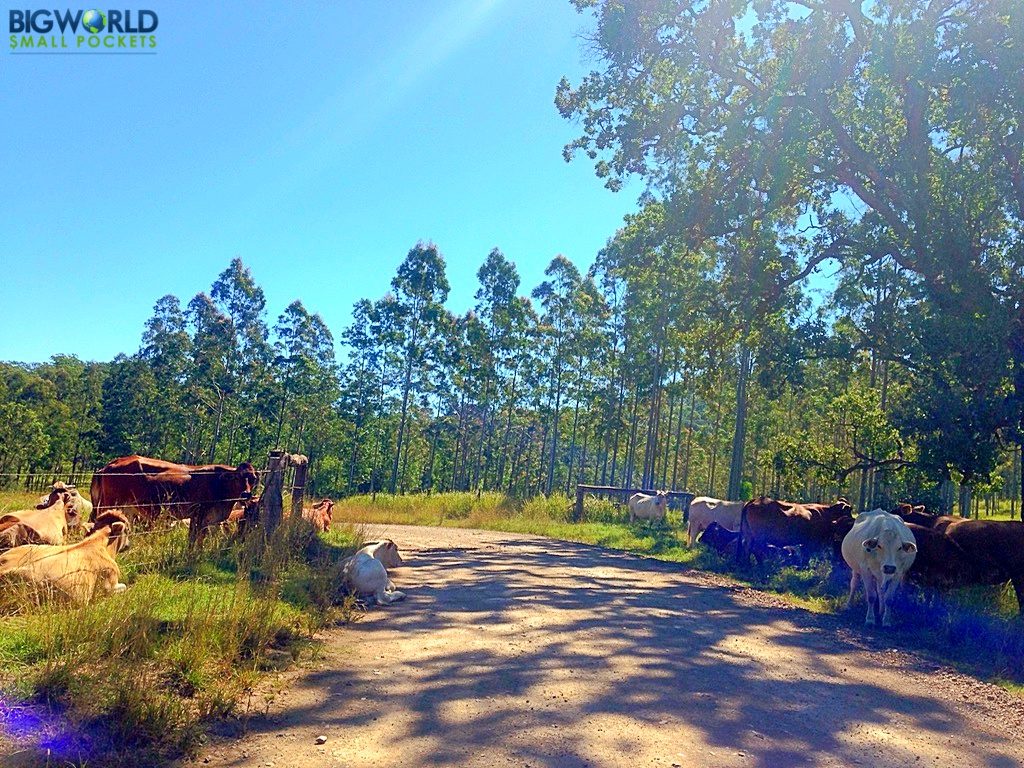
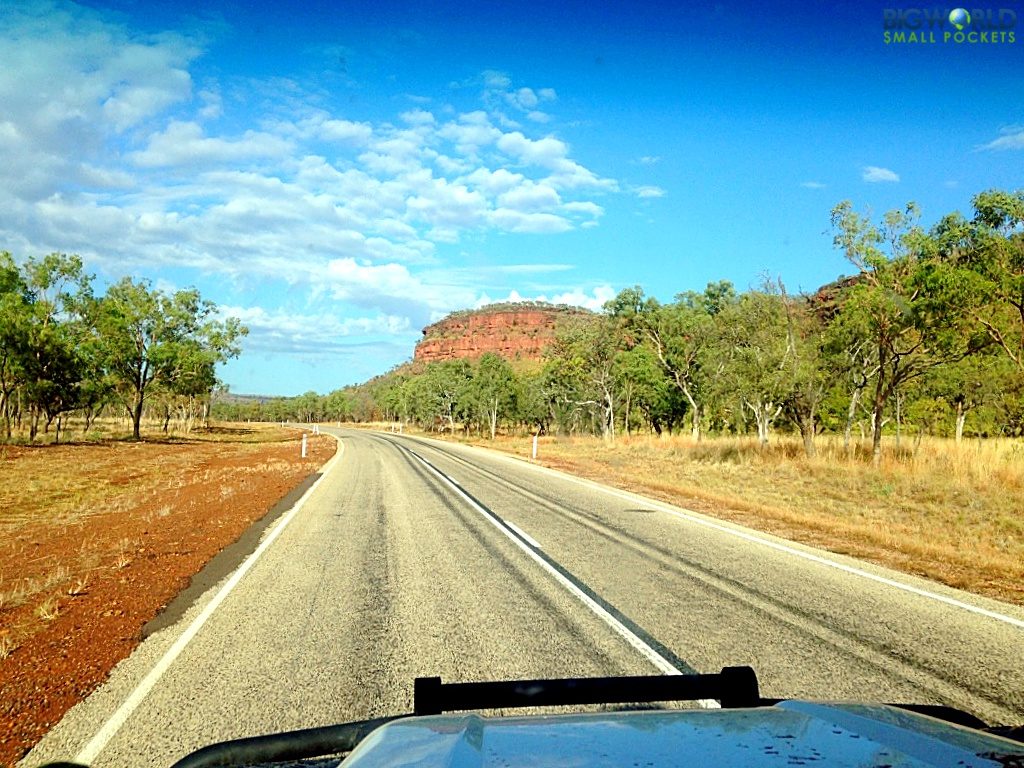
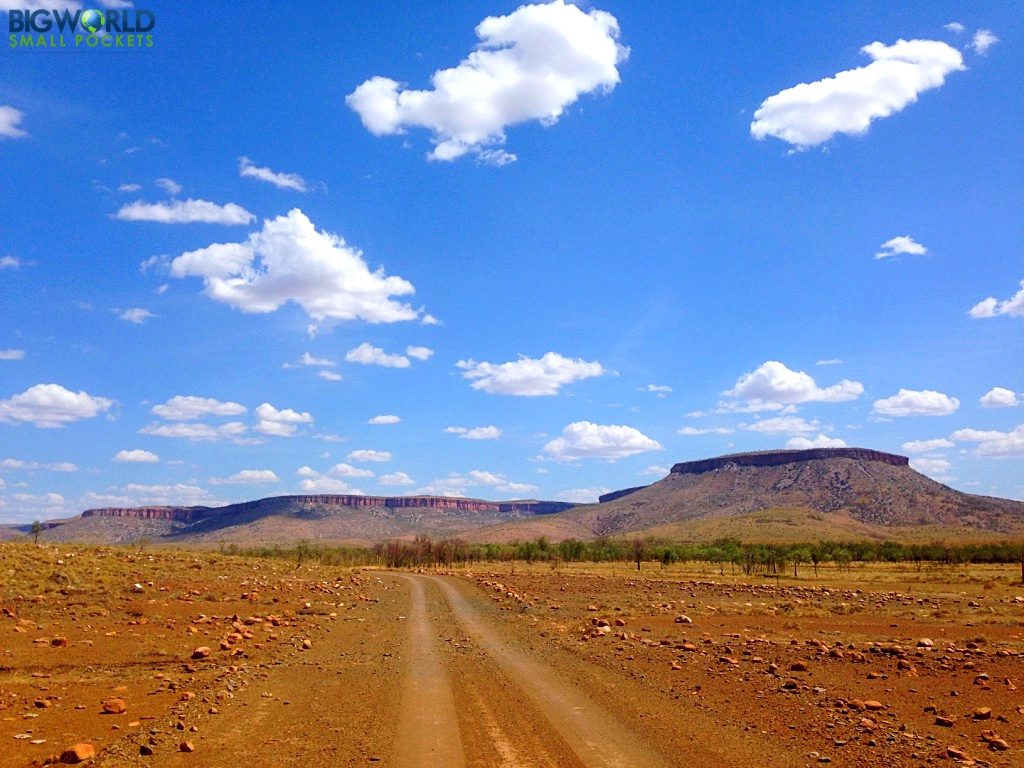
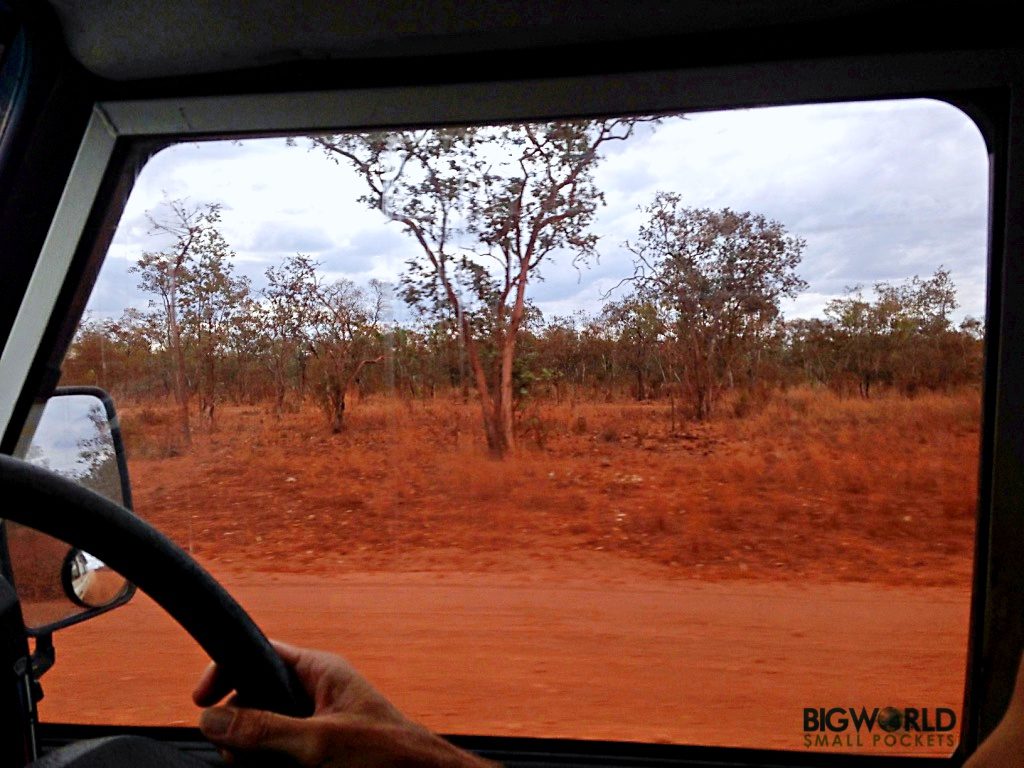
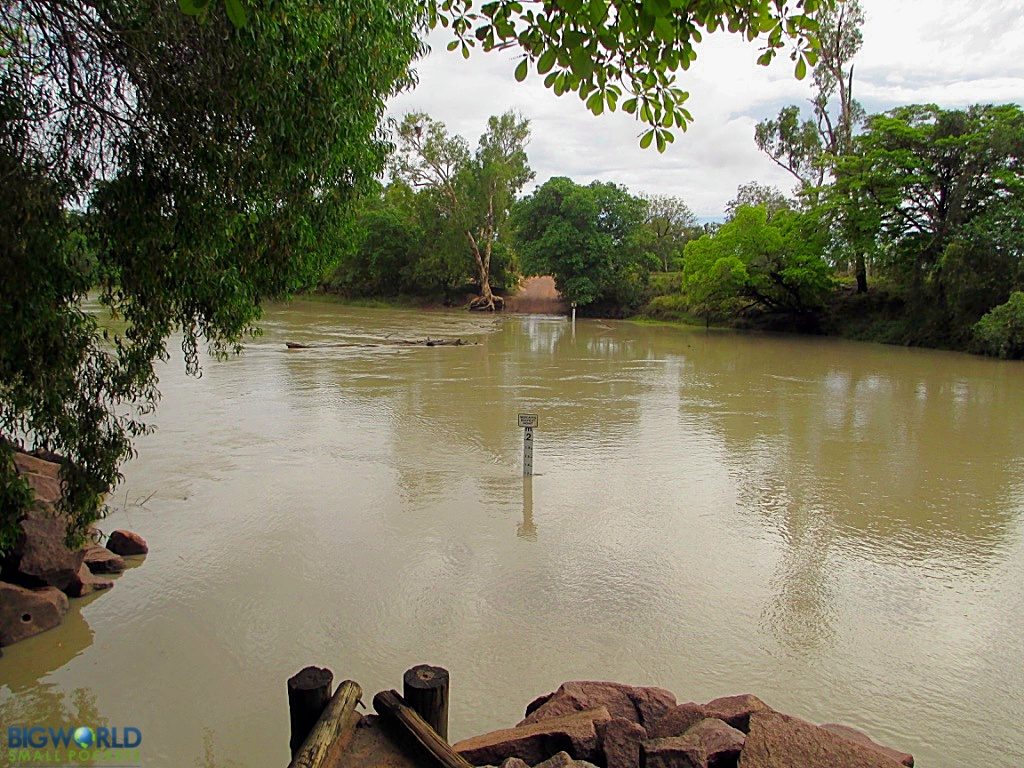
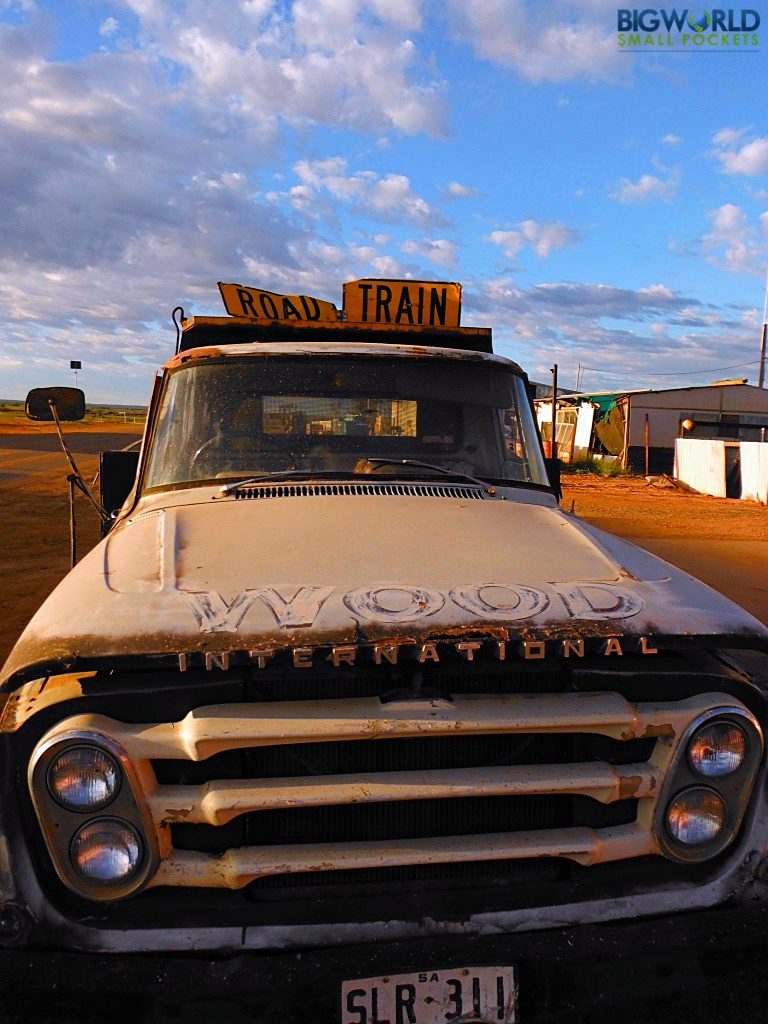
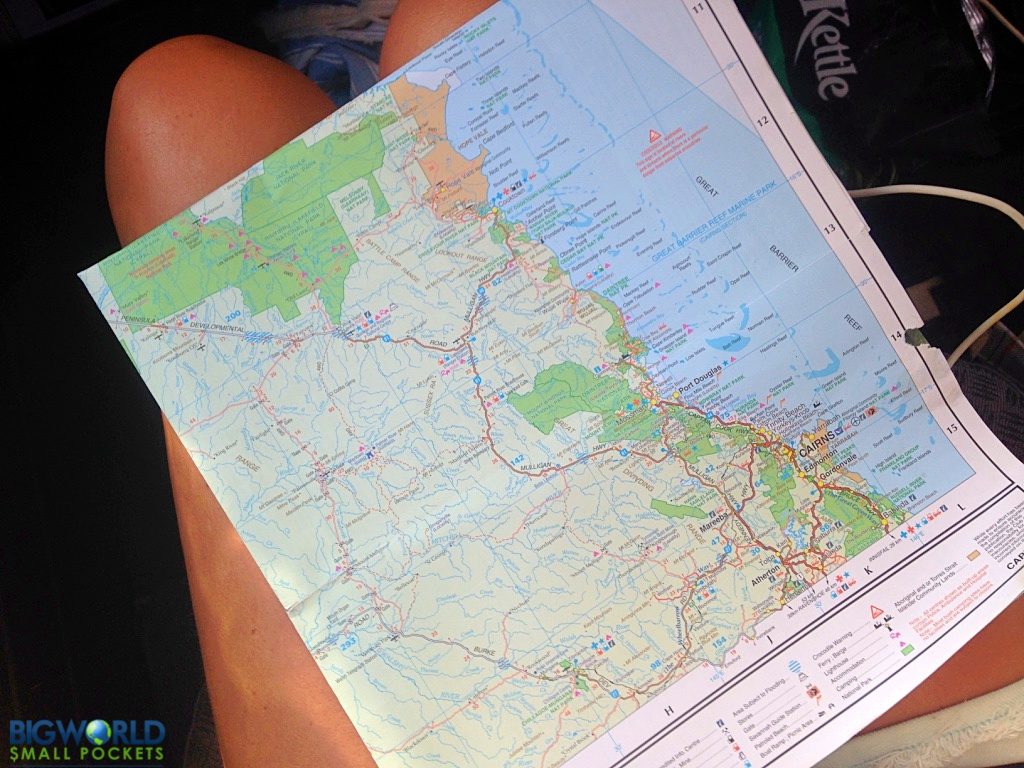
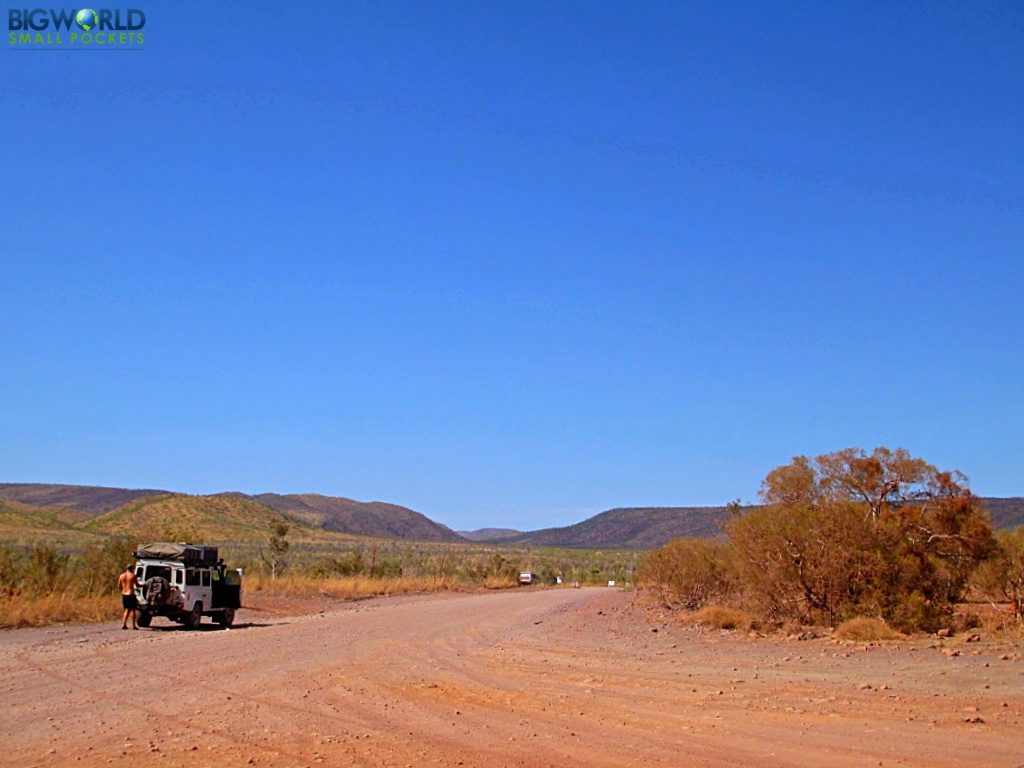
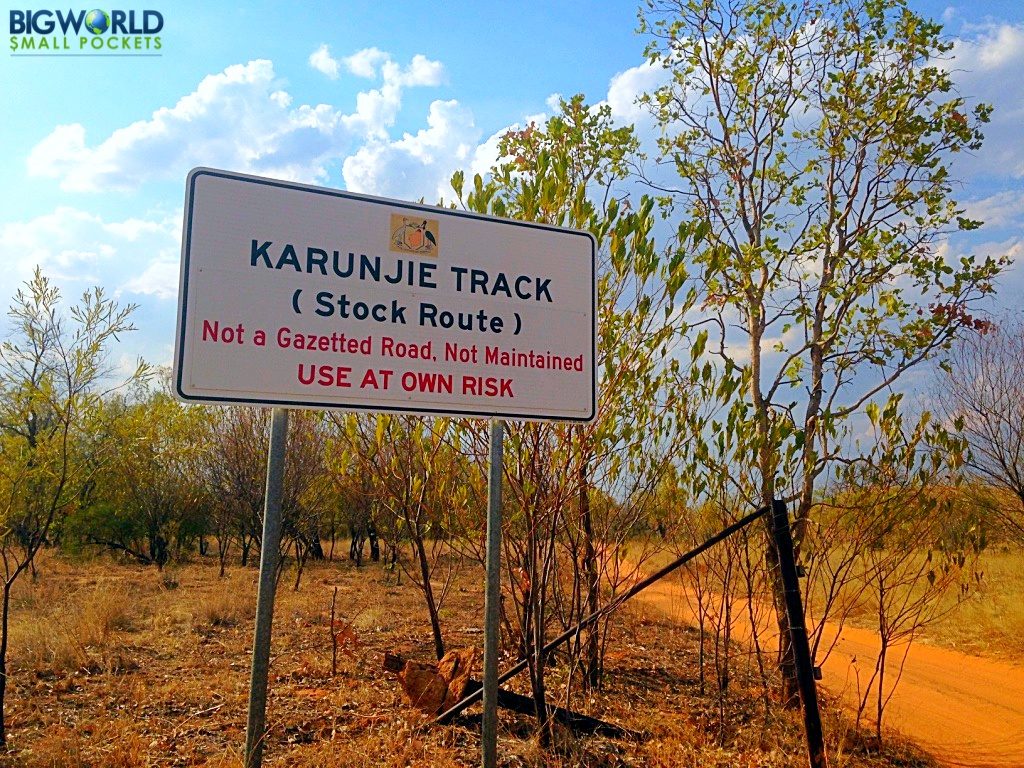
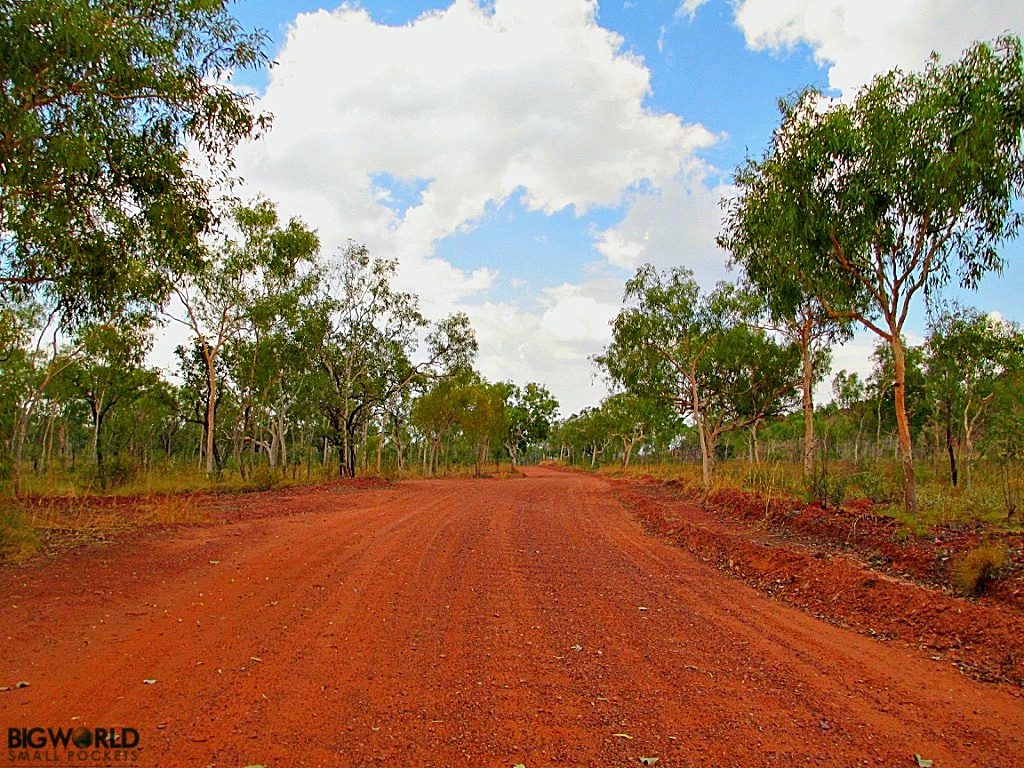
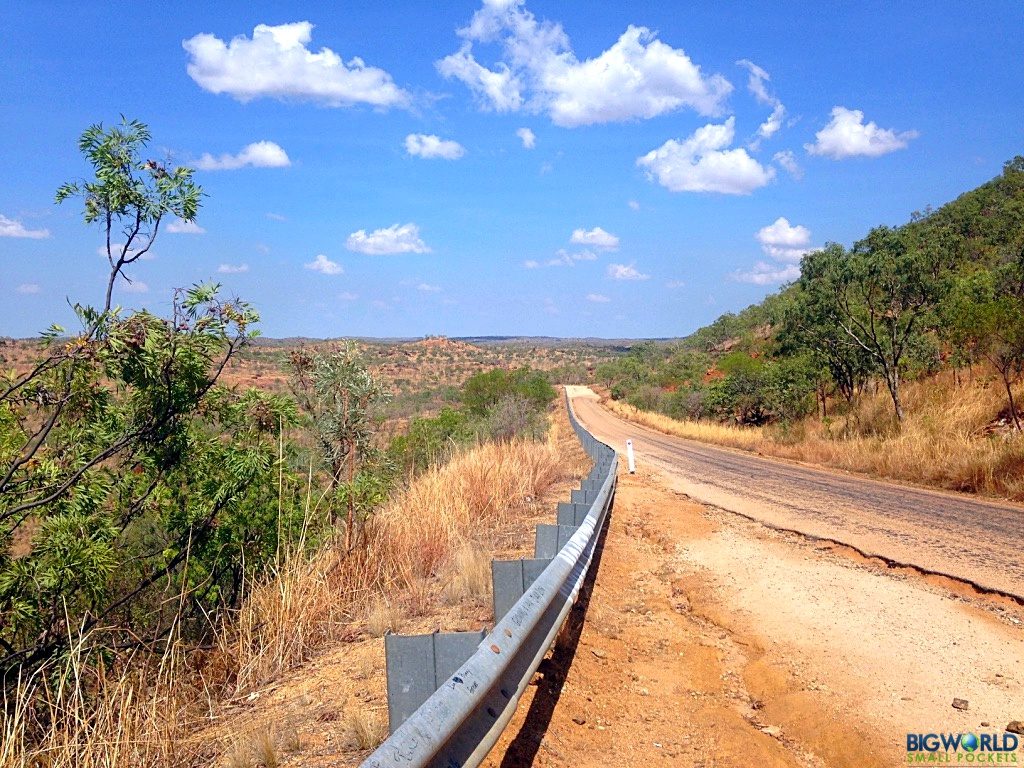
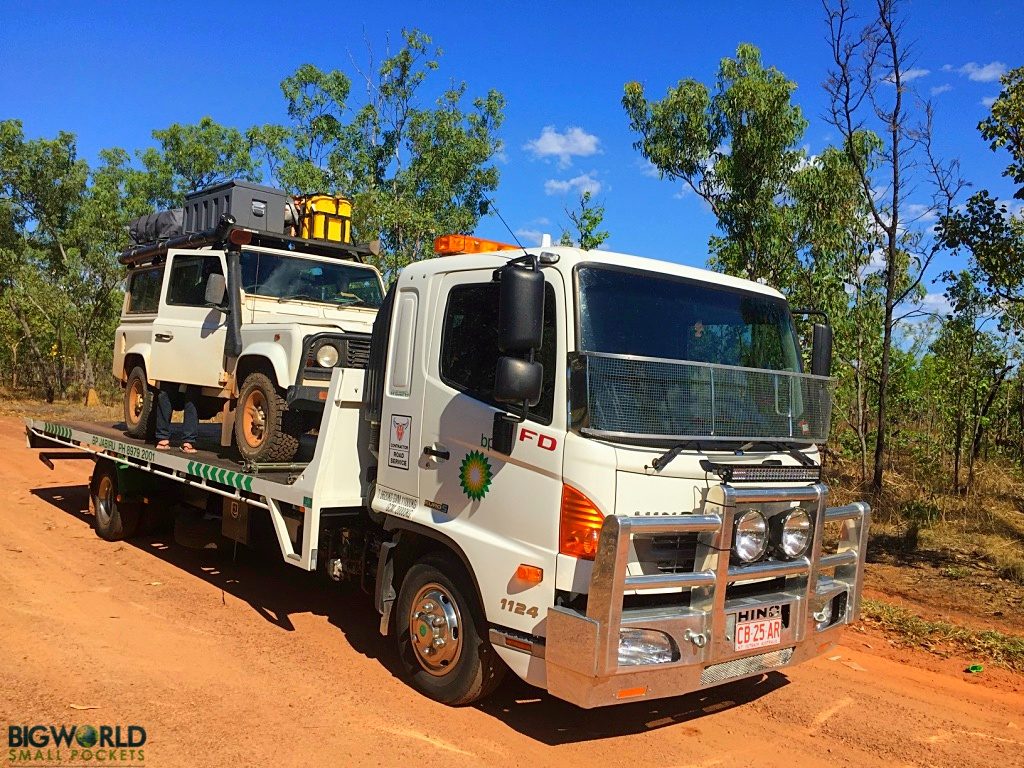
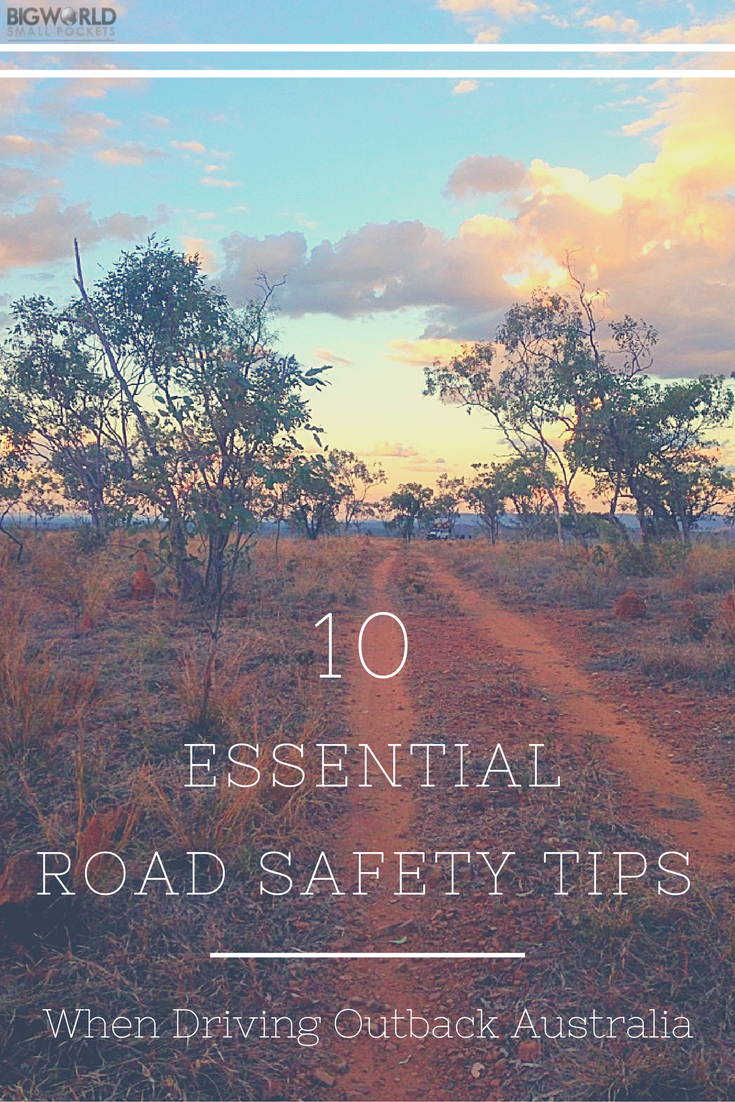
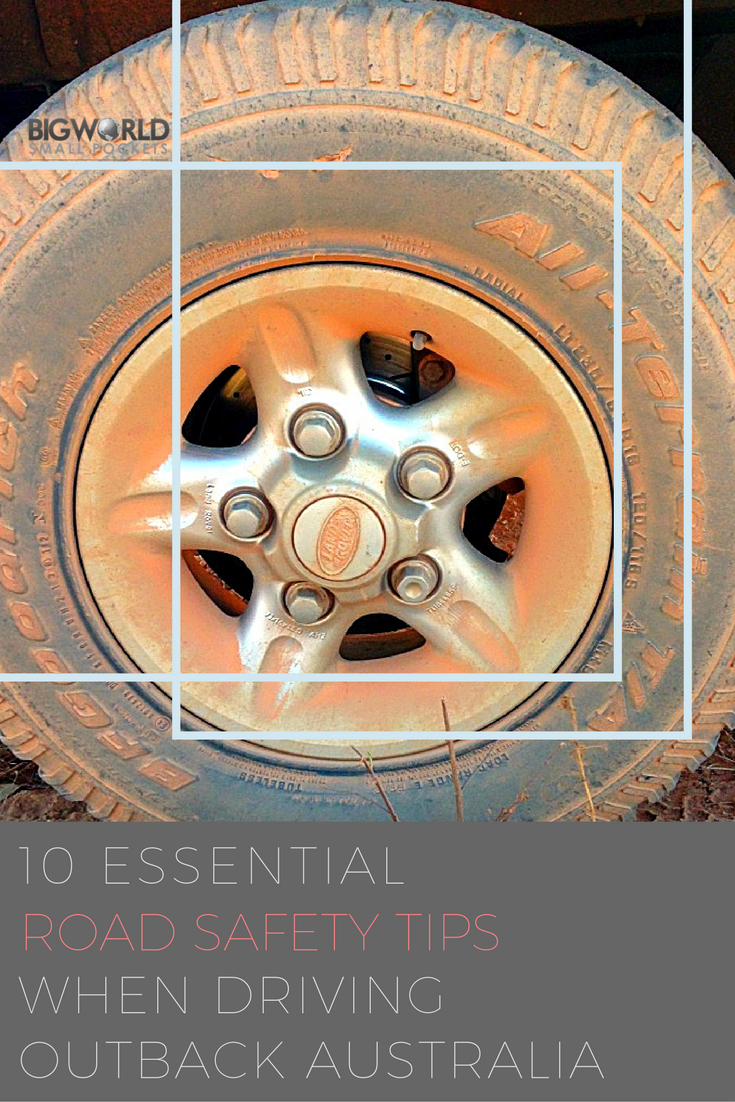
Hi, thankyou for your advice there is a lot of general common sense in your list of 10 which as a girl from a country farm I and my siblings had the advantage of learning… so what you have advised has confirmed my personal thoughts and mindfulness… cheers🌞🌄🌅🌌⛼
Thanks Pamela, great to hear that someone who grew up in the country, agrees. Thanks for your comments 🙂
Road safety tips is one of the most important topic when you are planning road trip, Thank you for sharing useful information.
Thank you Naveed 🙂